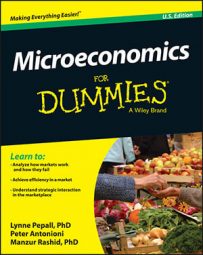Economists look at decisions in a slightly different way from how you might expect. They don't have a model of all the things that you as a consumer would use to inform your decisions.
They don't know, for example, who you are, or more precisely what all your values are. They make no assumptions about gender, ethnicity, sexuality, or anything else. They just know that you need to make choices and they explore how you may do so.
Starting simply
Economists make the least possible number of assumptions about the decision-making process and ask what you'd do if you cared about getting the best possible outcome. Here are the two basic assumptions:
The consumer is utility-maximizing: She seeks to maximize her utility, which is the value to the consumer of her choice.
The company is profit-maximizing: It wants to maximize its profit.
These choices don't necessarily involve selfishness. A utility-maximizing consumer can get benefit from helping other people, and a profit-maximizing company may want to redistribute surplus profits to charitable causes.
Growing more complex
To begin with, these models are quite simple. If Bob has $10 in his pocket and he wants to decide between having a burrito or a pizza, he'll get the meal that gives him the most value or utility, given that it costs less than $10. Simple!
But later on, the models start to incorporate all kinds of other factors, such as budget constraints: If Bob's income goes up, will he buy more or less pizza? Or what about the utility of other people? If Bob's friends won't eat pizza with him (perhaps he chews with his mouth open), he may get less utility from the pizza. Eventually, even with simple assumptions, models can end up incorporating some pretty complicated reasoning.
When you look at this example from the perspective of the pizza restaurant, things also start off simple: The restaurant just wants to make as much profit as possible, working to reduce its costs to do so. But what if you factor in competitors? What if the shareholders of the pizza company — the company has grown, adding layer on tasty layer — have different interests than the managers? What if the managers don't just want to get costs down, but want to keep competitors out? Again, the key is to start from the fewest justifiable assumptions and then build up as you get more familiar with models.
Even at the simplest level, models tell you plenty about reality. They can give you an account of how people and companies react to prices, and how this reaction changes as industries get more competitive or as companies get bigger.

